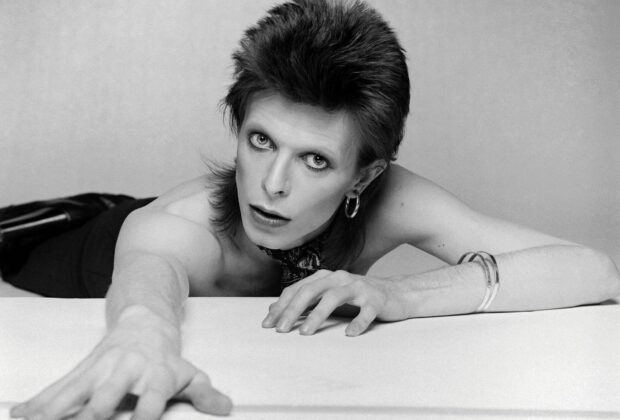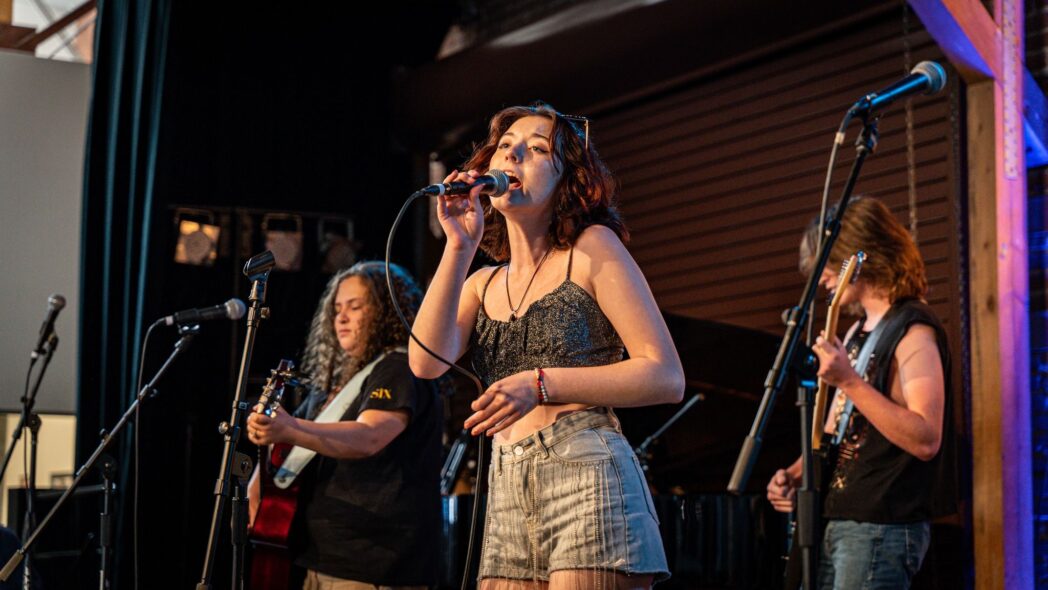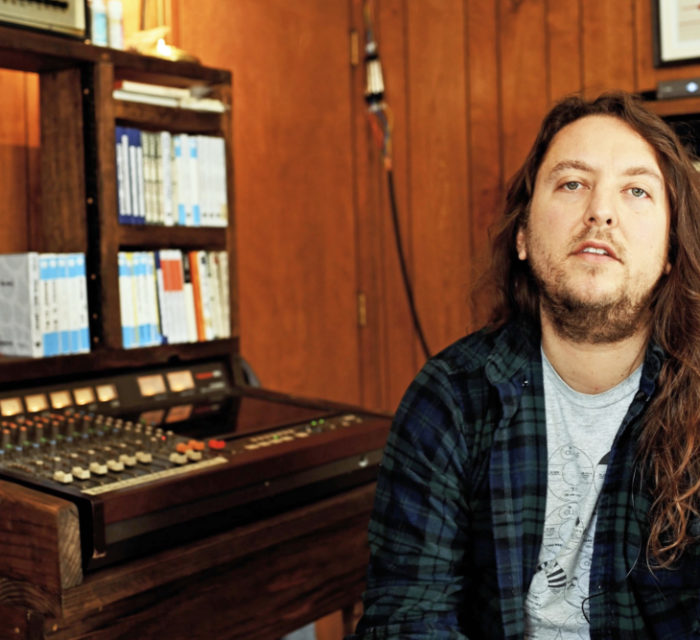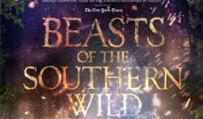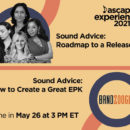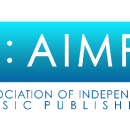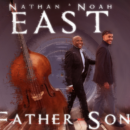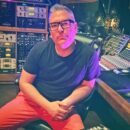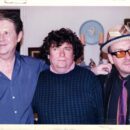Photo by Terry O'Neill
On May 24, the exact day of its Golden Jubilee, David Bowie’s Diamond Dogs will be issued by Rhino as a limited edition 50th anniversary half-speed mastered LP and picture disc pressed from the same master.
Diamond Dogs was recorded during January- February 1974 in London at Trident and Olympic studios and Ludolph studios in Nederhorst den Berg, Netherlands. Bowie produced the endeavor and Tony Visconti mixed it along with engineer, Keith Harwood. Besides his Diamond Dogs compositions and lead/background vocals, Bowie played lead guitar, saxophone, Mellotron and Moog synthesizer. The musician lineup included keyboardist Mike Garson, bassist Herbie Flowers, drummers Tony Newman and Aynsley Dunbar and guitarist Alan Parker on the “Rebel Rebel” and “1984” tracks.
The writing of the album was influenced by Bowie not being able to secure the rights for a theatrical production of George Orwell’s 1984 and the work of William S. Burroughs, whom Bowie had interviewed for Rolling Stone in November 1973.
“To say that 1974 was a year of change and challenge for David Bowie and his fans is an understatement as extreme as the lurid outfits he'd worn as his just-abandoned alter ego, Ziggy Stardust,” wrote music journalist Jem Aswad in an article on NPR.org, Who Can I Be Now? How David Bowie Spent 1974, on June 14, 2014.
“In July of 1973, at the peak of his success, Bowie unexpectedly retired Ziggy — the character and vehicle he'd ridden to fame after nearly a decade of trying. And by the end of that year, he'd basically abandoned rock 'n' roll altogether. “That the two studio albums associated with the tour — Diamond Dogs, released in March of '74 was already a departure, being musically more subtle than its comparatively garish predecessor, Aladdin Sane, and Young Americans, put out a year later and featuring Bowie's first U.S. No. 1 single, "Fame" — made him into a star in America is perhaps the strangest twist of all.
“It's one of the most drastic image/sound changes in the modern era, and it was just the beginning of the transformations Bowie would make over the next several years,” summarized Aswad, who currently is the music editor of Variety. The songs on the Diamond Dogs album created an urban apocalyptic scenario with Bowie appearing on the cover as a controversial half-man, half-dog hybrid painted by the Belgian artist Guy Peellaert (Rock Dreams) from photos by the world-renowned photographer Terry O’Neill.
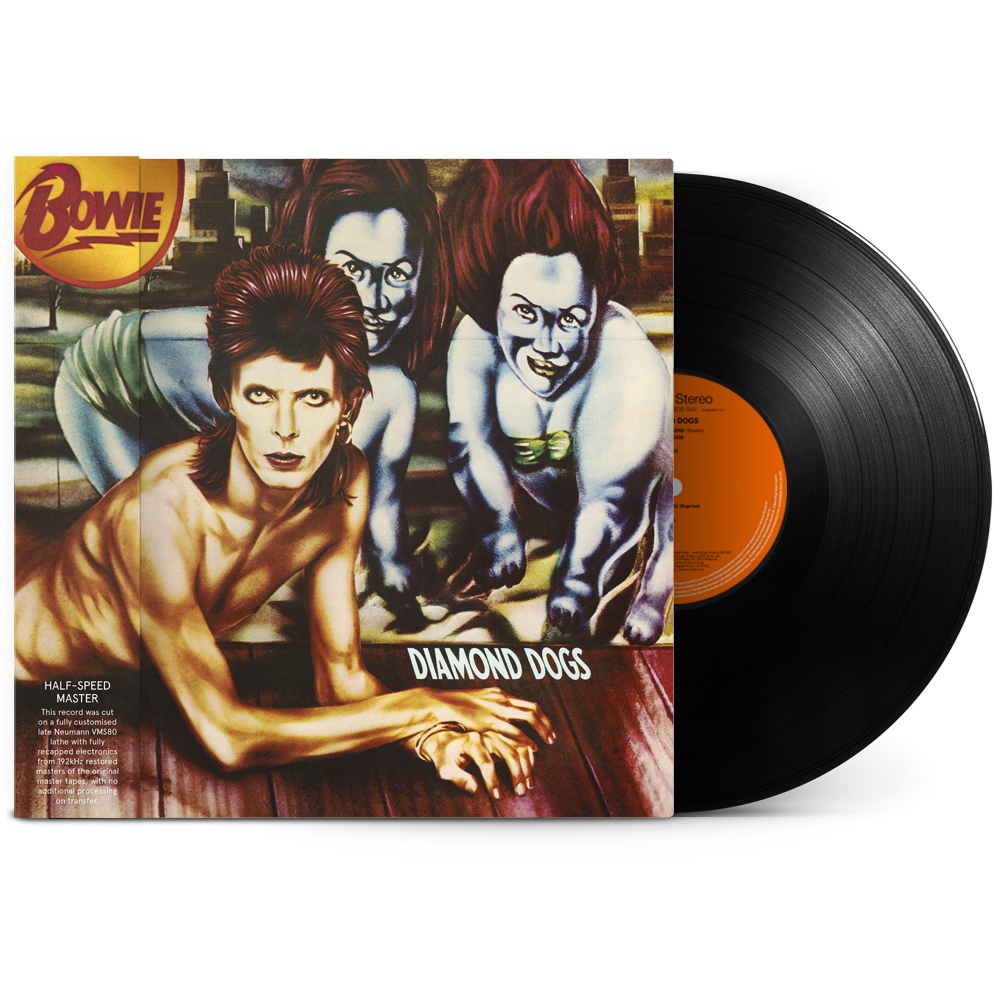
During 2010 I interviewed O’Neill about his sessions with Bowie.
“One day, Tony De Fries, who was Bowie’s manager at the time, rang up and said, ‘We’re doing this album called Diamond Dogs and I need you to shoot David like a dog in a studio and give the pictures to artist Guy Peellaert.’ “So, I take him into the studio and have him posing like a dog with his hands in front of him and all that thing. When I finished, I thought, ‘Well, I’ll take a couple of pictures with the dog.’ And just before I was about to start the roll of film this dog leaps up and I just took the picture. And Bowie didn’t even register what was going on. I mean, he was out of it a lot in those days,” underscored Terry.
“Bowie used to ring me up all the time. I mean, I was sort of his photographer for a while on that Diamond Dogs tour. And in London when they were doing special things. Because they knew all the newspapers were desperate for pictures or they knew I could get pictures into newspapers. Bowie went along with it all and very cooperative and very appreciative. He is a guy who looks better in color than black and white.”
The first single from the album, “Rebel Rebel” reached No. 5 in the UK, and the album would also reach similar heights on both sides of the Atlantic, reaching No.1 in the UK and No. 5 in the US.
Since its release, tracks from Diamond Dogs have been covered by artists such as Beck, Tina Turner, Duran Duran, Def Leppard, Joan As Police Woman, Dead Or Alive and The Struts.
To promote the album, Bowie undertook his most theatrical and elaborate tour to date, which was captured on film by director Alan Yentob for the infamous BBC program Cracked Actor and the classic David Live album. Despite written promises to fans that the tour would reach the UK, it never did. For the second leg of the US tour, Bowie stripped back the show and started taking his material in a more soulful direction, which would be fully realized with the release of his next album, Young Americans.
This new 2024 pressing of Diamond Dogs was cut on a customized late Neumann VMS80 lathe with fully recapped electronics from 192kHz restored masters of the original master tapes, with no additional processing on transfer. The half-speed was cut by John Webber at AIR Studios.
Diamond Dogs
Track Listing
Side One
- Future Legend
- Diamond Dogs
- Sweet Thing
- Candidate
- Sweet Thing (Reprise)
- Rebel Rebel
Side Two - Rock ’n’ Roll With Me
- We Are The Dead
- 1984
- Big Brother
- Chant Of The Ever Circling Skeletal Family
In 2012 I interviewed engineer/record producer Ken Scott about Bowie’s use of piano on David’s 1971-1974 albums. Scott collaborated with Bowie on his 1971-1973 sonic explorations. - “One of the things in looking back on the Aladdin Sane period that has fascinated me was that I didn’t realize it until recently, was the way piano changed David’s music. It occurred to me how a certain amount of David’s transformation, you take Hunky Dory which had Rick Wakeman on it, who is a fantastic, a bit more classically-oriented pianist, ‘Life On Mars,’ very good at rock ‘n’ roll but his training was more classical. His piano on ‘Life On Mars’ is unbelievable.
- “Then you go into Ziggy Stardust, with Bowie and Ronno playing. On Ziggy, it’s really simplistic because they weren’t pianists. Neither of them particularly awe-inspiring. So, the piano is very simple on Ziggy.
“But then you to Aladdin Sane and Mike Garson is on board, and it completely changes the whole feel of it. Now how much of that is pre-planned by David to move it into a different direction and how much is their effect on the way that we recorded I don’t know. The Beatles kind of grew by using different instruments. Bowie changed and grew by using different people playing. It’s bizarre. His use of keyboards really does sort of cover his growth and how he changed.”
Last decade keyboardist Mike Garson and I discussed Bowie. He spoke about his Latin jazz influence on
Alladin Sane, supporting David’s lyrics, and playing live in Bowie’s bands.
“I never thought about the words consciously. He could have been humming. Now that he’s gone, I’m really hearing the lyrics, and the music and songs are so strong. I really believe his work on stage would have worked without the clothes and make up. I got an energy from him. I always loved performing so now every night I play every piece as something different.“
As far as the Latin influence, I had worked with Eddie Palmieri, plus I worked opposite Larry Harlow, [American salsa musician] earlier in the Catskills with Dave Leibman. I showed Bowie some stuff.
“
Anything that I had done prior to working with David I could do on his sessions or in concerts. On that Aladdin Sane album and songs like ‘Aladdin Sane’ and ‘Time,’ Ken Scott was very involved in the high frequencies and EQ. An extraordinary producer, engineer and mixer. I worked with him and David at Trident, where the Beatles did some [1968] recording. It was two chords, an A and G chord, and done in one take. David's son, Duncan once admitted to me that he was petrified of my ‘Aladdin Sane’ piano solo and that they gave him nightmares.
“David was an explorer and was locked into his music. In the 1972-1974, I was with David he fired five different bands and I was the only one he kept. Because I was able to change styles and go from the English rock to the avant-garde to the soul and gospel stuff. And that was the only reason he kept me and that we were friends. But he saw that I could go with him as he was ever-changing. And he knew as a jazz musician I was always looking and searching.
“Because I carried the spirit of what an improviser was. Lennie Tristano really didn’t allow me to play licks. I always had to play something fresh.”
I discovered “1984” from Diamond Dogs on an FM station as I interviewed Rod Stewart at the Beverly Wilshire Hotel. Rod remarked to me after listening to the opening guitar riff, “sounds like David has been listening to Isaac Hayes’ “Theme from Shaft.”
I attended every date of Bowie’s September 1974 booking at the Universal Ampitheater in Universal City, California. The stage repertoire presented his past, current and future musical direction.
The set list:
- 1984
- Rebel Rebel
- Moonage Daydream
- Sweet Thing
- Candidate
- Sweet Thing (Reprise)
- Changes
- Suffragette City
- Aladdin Sane (1913-1938-197?)
- All the Young Dudes
- Cracked Actor
- Rock 'n' Roll With Me
- Knock on Wood
- It's Gonna Be Me
- Space Oddity
- Future Legend
- Diamond Dogs
- Big Brother
- Chant of the Ever Circling Skeletal Family
- Time
- The Jean Genie
- Rock 'n' Roll Suicide
- Again
- John, I'm Only Dancing
During his Diamond Dogs tour I spent half an hour with David at the Beverly Wilshire Hotel. We talked about beat generation literature and R&B music while glimpsing at an episode of Soul Train on television.
There was a commercial for a hair product, Afro Sheen. In Bowie’s “Young Americans” he sings “Blushing at all the Afro-Sheeners.” We both attended the local Al Green concert at the Universal Ampitheater. I gave Bowie a paperback copy of Ann Charters’ Jack Kerouac: A Biography knowing his Spiders from Mars band name was an homage to Kerouac’s On the Road: “exploding like spiders across the stars.”
Charter’s book is seen by his hotel bedside in the Omnibus Cracked Actor 1975 UK documentary which
aired on the BBC 1 channel.
On September 18, 1975 I interviewed David in Los Angeles at Television City inside the CBS studios on
the corner of Fairfax Avenue and Beverly Boulevard. Bowie was taping the Cher TV show for a November
9th broadcast. I covered it for the now defunct Melody Maker in their October 25, 1976 issue.
“At age 29, David Bowie has finally conquered the United States. “Fame” has been number one for four
weeks on most of the charts, and a grin crossed his lips when told of the song’s progress on the R&B listings. ‘I know!’
David had already shed the trappings of his Diamond Dogs album and ’74 tour. “The opening bars of ‘Young Americans’ begins and, just as the groove is established, the house band swings into Neil Diamond’s ‘Song Sung Blue,’ then ‘One,’ the Harry Nilsson tune, and Cher’s rendition of ‘Da Doo Ron Ron,’ the Phil Spector-produced Crystals classic, waxed at Gold Star Studios.
“An unexpected bonus was the fabulous voice of Darlene Love who provided backing vocals. The segment segued into ‘Wedding Bell Blues,’ a Laura Nyro song, the Chantels’ ‘Maybe,’ and the Beatles’ ‘Day Tripper.’ David performed Bill Withers’ ‘Ain’t No Sunshine,’ which segued into the Leiber and Stoller penned Coasters’ ‘Youngblood,’ and soon returned to ‘Young Americans.’ Bowie sang ‘Fame’ to a pre- recorded backtrack, and Cher joined on a duet of “Can You Hear Me” from the Young Americans LP.
Afterwards, I was introduced to Cher. “I adored working with him and was delighted to have him on the
show,” she beamed, behind her toothy smile. In my brief 1975 Melody Maker dialogue with Bowie, he commented on his just completed feature-length movie The Man Who Fell To Earth. Portions of the soundtrack was done at Cherokee studios on Fairfax. It was quite obvious that David had already departed visually, musically and emotionally from the self- imposed world of Ziggy Stardust character, and Diamond Dogs’ role into his ongoing multi-hyphenate
journey.
“The difference between film acting and stage acting is enormous. On stage you are in total control, whereas in a film the actors are instruments of the director. I think a stage performance is more of a ceremony and one plays the high priest. But in a film, you are evoking a spirit within yourself. You feel a tremendous responsibility of having the power to bring something to life. For example, Major Tom in ‘Space Oddity.’”
In March 2024, I reminisced with poet and deejay Dr. James Cushing, writer/novelist Daniel Weizmann, and Marina Muhlfriedel, writer and keyboardist/vocalist in the bands Vivabeat and Backstage Pass about the impact and durability of Diamond Dogs 50 years after its initial retail release.
“Diamond Dogs pops in May ’74. Stacks of LPs at Tower Records vaporize like Star Trek effects,” reminisced Muhlfriedel. “I nab my copy and hustle home like every other self-respecting Bowie fan. Intrigued. I play it a few times but can’t bring myself to push Ziggy and Aladdin Sane further down my record pile to let it claim the top of the heap. Call me superficial, but along with the absolute unique genius that permeates everything, Bowie, I am enamored by his rock and roll prettiness, the guileless stretch of the imagination that is David Bowie, not just physically but in the elastic elegance of his songs—that gorgeous, sexy, theatrical quality even when playing rough.
“I’m caught up in the elation surrounding every Bowie release, but it takes a bit to wrap my head around this nightmare-apocalyptic thing,” confessed Marina. “The cover art puts me off—not pretty. It gives me the creeps. I read into the character—after Ziggy, Aladdin Sane, and maybe even Pin Ups’ Twig the Wonder Kid, Halloween Jack is nasty around the edges. It might take a while to warm to him.
“It’s June 1974, and turning 21 that week, I flash an authentic driver’s license at the dubious bartender at
Rodney’s English Disco on Sunset. Proud of my legal beer, I join three friends on the dance floor, undulating to T. Rex’s ‘Bang a Gong.’ Purposely sparkly, a dab sweetly slutty, feeling so immodestly and undeniably fabulous, dancing our rhinestone hearts out, more with our mirrored reflections than each other. But Bowie is our highest deity — and when ‘Rebel Rebel’ kicks in next, I’m lifted, lost in loudly singing along. It sinks in that Diamond Dogs is just another incarnation of what will be an endless parade of Bowies to fall in love with.
“In the days that follow, 1984, Sweet Thing, and Rock n’ Roll with Me get way under my skin. The album
takes a chance at new complexity, dare I say maturity. I come to love Bowie’s approach to playing so many of the instruments and not always having to be pretty. And for the next few months, Diamond Dogs finds its spot at the top of my record stack. Yeah, hot tramp, I love you so!”
“By the time Bowie released Diamond Dogs in 1974, the rock ‘concept album’ was had been a part of the
landscape for seven years,” offered Dr. Cushing. “I’m talking about a collection of songs that announces itself as having an overall unity of some sort, not unlike the song cycles of the Romantic era. The first famous ones did something modern with the concept: they kept it loose, hiding it under a profusion of melody (Pet Sounds, Sgt. Pepper), or using it as a magnet for wide-ranging social criticism (We’re Only In It For The Money).
“The less successful ones imitated classical models of opera or musical theatre (Tommy), taking themselves too seriously in the process (Thick as a Brick). Bowie’s concept album The Rise and Fall of Ziggy Stardust and the Spiders from Mars (1972) was arguably the best concept album up until that time, blending the wide focus of Zappa with the anthemic energy of Lennon-McCartney.
“Diamond Dogs was a different kind of concept album, one that had explicit reference to a pre-existing literary text, Orwell’s 1984, which the author’s widow had forbidden Bowie to adapt for a stage musical. This limitation actually worked to the album’s advantage, since it forced Bowie to use the concept loosely — like the band concert concept behind Sgt. Pepper. “He invented story elements (Halloween Jack, the romance between the boy and the Candidate) and used the novel essentially as raw material for collage. You wouldn’t get much of Orwell’s plot or characters from the songs called ‘1984’ or ‘We Are the Dead,’ but the whole album gives a sense of the doom hanging over the lives of Oceana’s citizens. That sense of doom is relieved in the album’s brightest moment, the hit single ‘Rebel Rebel,’ one of the most life-affirming rock hits of the decade.”
“I think of Bowie as rock music's great Trojan Horse-- the fantasy costumes, the masks, the pyrotechnics were all a shell or a shield with which he snuck in his powerful vision of reality, the poetry of loneliness,”
suggested Weizmann. “He himself said much later in his career, "What I mainly do is write about very personal and rather lonely feelings" and he was never more explicit than on the ‘Sweet Thing’/‘Candidate’/ ‘Sweet Thing (Reprise)’ section of Diamond Dogs.
“Like a musical version of John Rechy's City of Night, the trilogy slips through the shadows of America at night, it's "darkcities" suffused with "one-night sex and cigarette smoke and rooms squashed in by loneliness."
“Early versions allegedly appear on Aladdin Sane sessions recorded at Trident in '73 as a musical one-act that Bowie referred to as ‘Tragic Moments.’ Like ‘Cracked Actor,’ the suite deals with a fleeting sexual relationship between an older person and a younger prostitute but this time from the younger person's POV, and it is a tragedy, a compassionate portrait on the level of Steely Dan's Gaucho, another exploited and homeless street person with no way out.
“Bowie's trilogy also contains one completely unforgettable image--one of the most arresting visions in all rock lyrics. After a seductive pickup in a doorway, on their way to a tryst, the couple saunters through the urban wreckage past bullet-proof masks of Manson and Muhammad Ali. What are these nightmare masks of violence and why are they papier-mache yet bullet- proof, the ultimate protection? Like Bowie's own masks, they hide the sweet thing, the vulnerable self, and the cheap thing called hope.”
I also discussed Diamond Dogs with the Singularity’s Julian Shah-Tayler, who records for David Chatfield’s Harmony Records, and Greg Franco, bandleader of Rough Church and Man’s Body. Both heard the memorable LP years after it was first issued. “I remember hearing Diamond Dogs for the first time as a young ‘goth’ kid and the song ‘Sweet Thing/Candidate (Reprise)’ was the doorway in to my ear: the high drama, the cutup technique of Burroughs being employed in the composition, the Orwell inception being a real draw to my inner philosophy, literature and music student. “Digging in to the whole album it unfolded as the defining funk/glam/art rock genre monster. An all-time favorite.”
“Honestly, in 1974 I was way too young to be awareof Diamond Dogs except for "Rebel Rebel,’ remembers Greg Franco. “At 11 years old, I heard Bowie's ‘TVC15’ single b/w ‘We Are the Dead’ and then bought it at a North Hollywood JC Penny store. “It wasn't until the late 70's when, I had a full stereo of my own, and FM radio started kicking ass, that I finally went to full rock discovery mode, and started
buying albums and living at record shops. “In 1979 my generations avant musical bent was
coming of age just as Bowie's Lodger 1980 Scary Monsters showed up in the same groove as new wave and punk. It was then that my musical tastes had matured, so I could come to terms with all of Bowie's
music.
“So, I'm actually quite late to Diamond Dogs and looking back, I get a deeper understanding on where this one places in his entire career. “David Bowie was Batman, and The Joker,” concludes Franco. “50 years ago, he lived in this world deep into a decadent 70’s apocalyptic acid trip. He was done with Ziggy, obsessed with death and destruction, as always. “He creates a new character, Halloween Jack, a pre
curser it seems now to the coming comic book Dark Knight. He seems to pine for ugliness, melancholy and vice. His voice on Diamond Dogs is his most desperate, he’s going down with the pirate ship.
“I particularly love ‘Sweet Thing.’ One of the true highlights for me is ‘We are The Dead.’ Bowie is always over the top, dramatic, and still mired in the dirty muck of it all, still he's dashing and sophisticated
somehow. “He next went to Philly Soul sounds, Young Americans, and eventually to Low, but we see something here that he came back to over and over again, a landscape of his mind that he never seemed to escape.”
(Harvey Kubernik is the author of 20 books, including 2009’s Canyon Of Dreams: The Magic And The Music Of Laurel Canyon and 2014’s Turn Up The Radio! Rock, Pop and Roll In Los Angeles 1956-1972. Other titles are on the Beatles, the Doors, Leonard Cohen and Neil Young.
Sterling/Barnes and Noble in 2018 published Harvey and Kenneth Kubernik’s The Story Of The Band: From Big Pink To The Last Waltz. In 2021 they wrote Jimi Hendrix: Voodoo Child for Sterling/Barnes and Noble.
Otherworld Cottage Industries in 2020 published Harvey’s Docs That Rock, Music That Matters.
His writings are in The Rolling Stone Book Of The Beats, Drinking With Bukowski, The Ultimate Illustrated History Bob Marley and the Wailers, and in Andrew Loog Oldham’s autobiography, 2Stoned.
In 2023, ACC ART BOOKS LTD published THE ROLLING STONES: ICONS. Introduction is penned by Kubernik.
In 2017 Kubernik appeared at the Rock and Roll Hall of Fame in Cleveland, Ohio, as part of their Distinguished Speakers Series. During 2006 Harvey spoke at the special hearings initiated by The Library of Congress held in Hollywood, California, discussing archiving practices and audiotape preservation. In 2020 The National Recording Registry at the Library of Congress in Washington, D.C.
exhibited Kubernik’s essay on the album The Band, which celebrated a 50 th anniversary in 2019).

